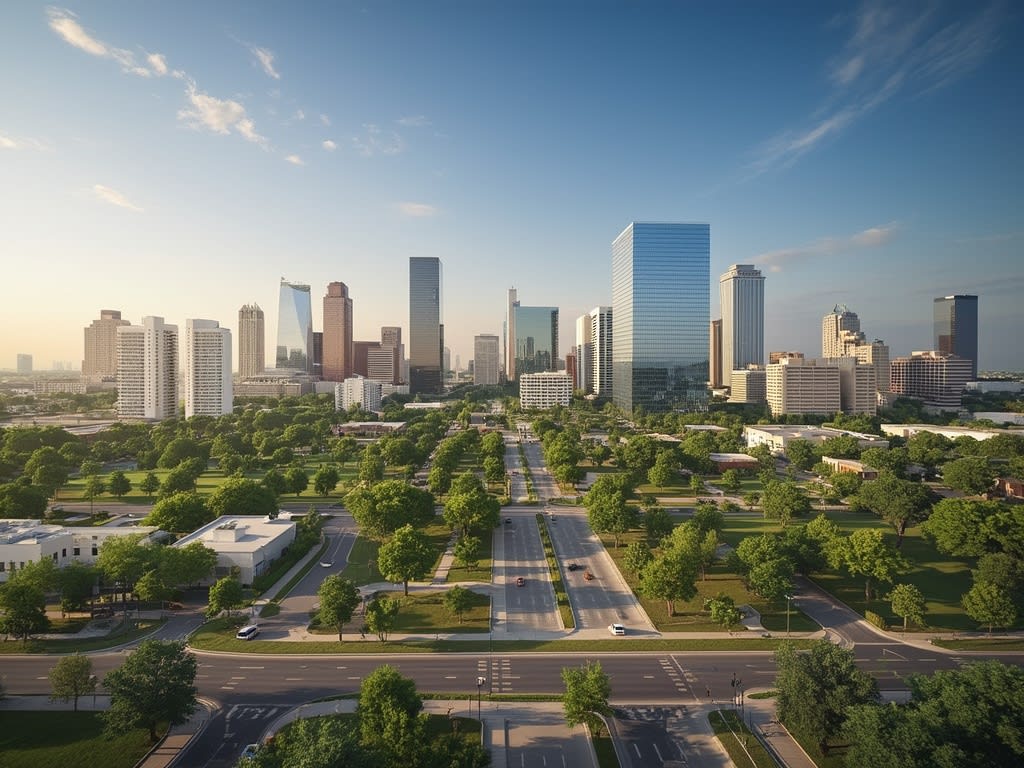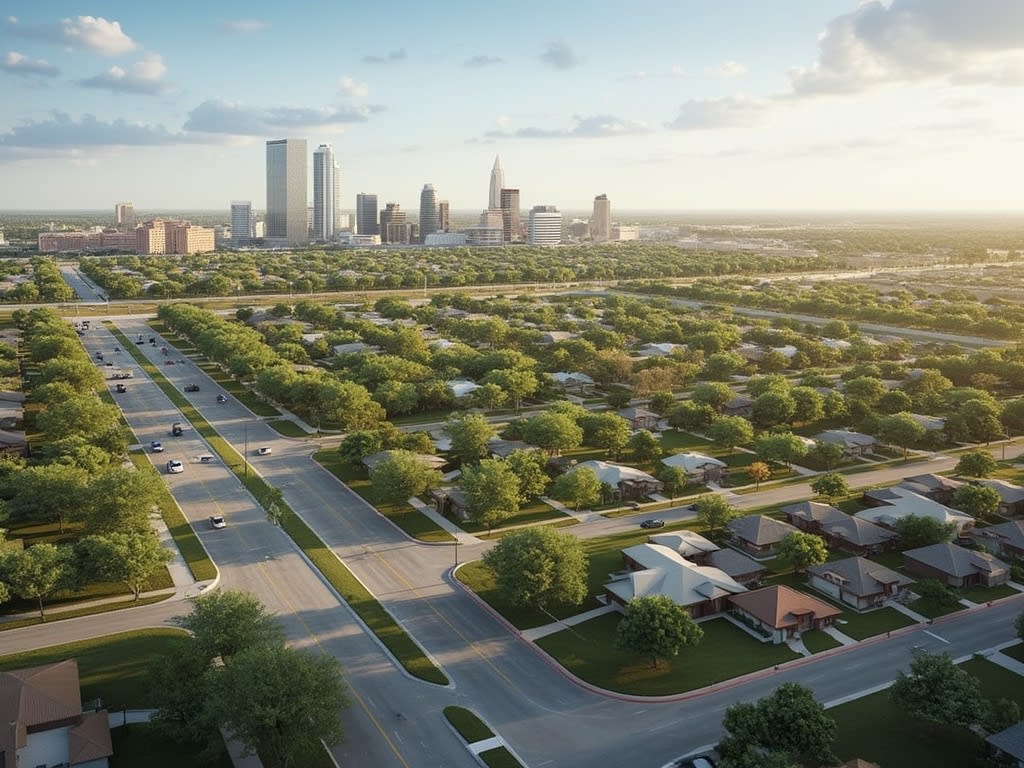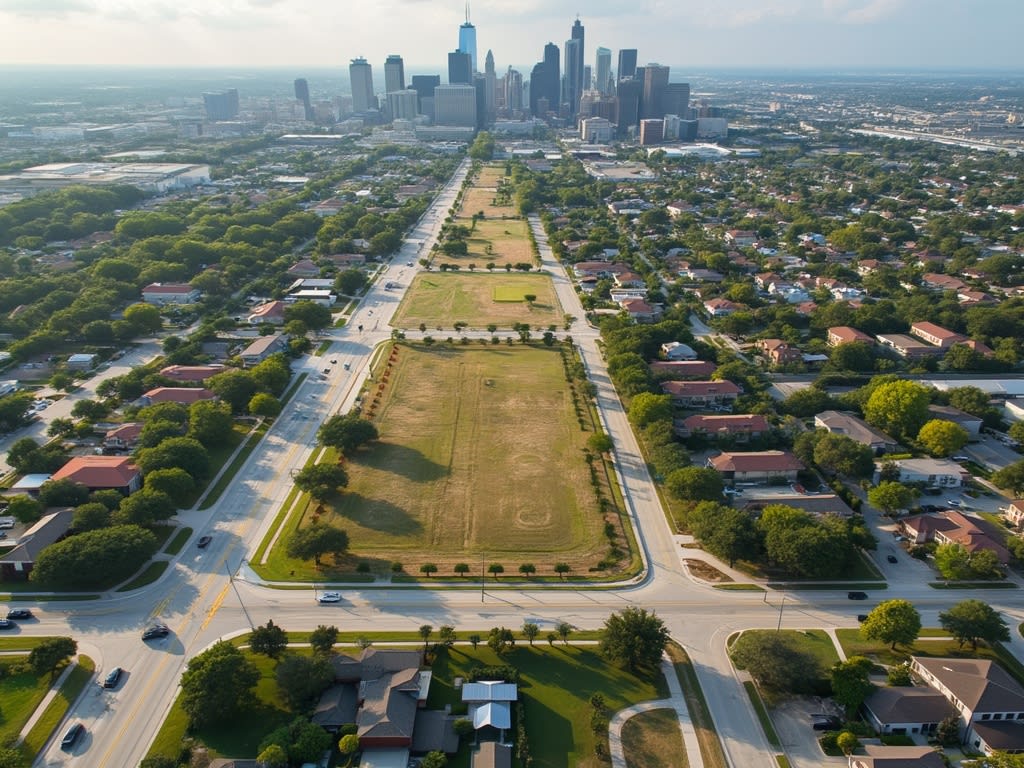Dallas’s real estate market places substantial financial demands on developers, with raw land costs reaching $859,032 per property – more than double the median home price of $412,000. These elevated costs stem from strict zoning laws, essential infrastructure requirements, and fierce competition for desirable locations.
Key Takeaways
- Raw land prices average $146,047 per acre, making developer land acquisition significantly higher than residential purchases
- Prestigious areas like Preston Hollow lead the market with median listings at $1.6 million
- Commercial space remains attractive at $31 per square foot, performing better than the $36 national average
- Tech industry growth has sparked a 50% population surge in northern suburbs since 2010, lifting property values
- Market projections indicate continued expansion through 2024, with Denton and Collin County expected to see 15% population growth over five years
Dallas Property Market: Developer Premiums and Market Analysis
Market Price Trends and Development Costs
Dallas’ real estate market showcases significant price variations between residential properties and development land. The median home price sits at $412,000, marking a 6.8% decrease from the previous year. However, I’ve noticed an interesting shift in November 2024, where the median closing price reached $399,000 – a 2.45% increase compared to last year.
Developers face notably higher costs in the current market. Here’s what the numbers tell us about development expenses:
- Raw land averages $859,032 per property
- Per-acre costs average $146,047
- Development costs run 108% higher than standard residential purchases
These figures indicate that developers pay substantially more than individual homebuyers in Dallas. This premium stems from:
- Zoning requirements and permit costs
- Infrastructure development needs
- Location premiums for prime development areas
- Competition for available land parcels
The gap between residential and development property prices points to rising construction costs and stricter building regulations. While individual home prices have seen recent decreases, development land maintains higher values due to limited availability and increased demand for new construction projects in prime Dallas locations.

Premium Neighborhoods and Development Hotspots
Top-Tier Residential Areas
Dallas’s most exclusive neighborhoods command significant premiums, with Preston Hollow leading at a median listing price of $1.6 million. Uptown Dallas follows as a prime location at $805,000, while Lake Highlands and Oak Lawn offer more moderate entry points at $450,000 and $434,000 respectively.
Development Landscape
I’ve identified specific market opportunities across these premium zones. Current market data shows 116 development properties ready for investment. These range from vacant lots in established neighborhoods to aging properties prime for renovation. Several factors drive higher costs in these areas:
- Proximity to major tech corridors and business districts
- Access to high-rated school districts
- Established luxury amenities and retail
- Historical property value appreciation
- Limited availability of buildable lots
Developers should expect to pay 20-30% above standard market rates in these premium locations, but the potential returns often justify the increased initial investment.

Commercial Real Estate Investment Landscape
Office Market Analysis
Dallas offers competitive commercial real estate rates compared to other major tech hubs. At $31 per square foot, average office rents fall below the national average of $36, making it an attractive option for developers and tech companies looking to establish or expand their presence.
Premium locations command higher rates between $30-45 per square foot, with key factors influencing prices:
- Proximity to tech talent pools and universities
- Access to public transportation
- Building amenities and infrastructure
- Distance to dining and entertainment districts
The market shows strong growth potential with 4.4 million square feet currently under construction. This expansion signals investor confidence in Dallas’s commercial sector. With a projected vacancy rate of 10%, property values maintain stability while still offering room for negotiation.
I recommend developers consider timing their investments strategically, as the current construction pipeline could create temporary oversupply in certain submarkets. The sweet spot for office investments lies in Class A properties near established tech corridors, where tenant demand remains steady despite market fluctuations.
The relatively lower cost structure compared to coastal tech hubs makes Dallas particularly appealing for startups and established firms alike. This cost advantage, combined with Texas’s business-friendly tax environment, positions Dallas as a prime location for commercial real estate investment in the tech sector.

Population Growth and Economic Drivers
Rapid Population Expansion
Dallas’s northern suburbs have seen incredible growth, with Collin and Denton Counties surging 50% since 2010. This expansion directly impacts property values in tech-focused neighborhoods, creating competitive markets for developers and homebuyers alike.
Job Market Influence
Young professionals, particularly in tech sectors, drive the local economy. Here are the key factors attracting this demographic:
- High-paying tech positions with major employers
- Lower cost of living compared to coastal tech hubs
- Strong startup ecosystem and business incubators
- Tax-friendly environment for businesses
- Quality school districts supporting family life
The influx of well-paid tech workers has created specific housing hotspots, especially in areas with direct access to major employment centers. Developers pay premium prices for land in these locations, knowing the steady demand from incoming professionals supports higher property values.

Rental Market Performance
Current Rental Prices
Dallas rental prices remain competitive for tech professionals, with rates scaling based on unit size and amenities. Studio apartments start at $1,269 monthly, offering an ideal entry point for solo developers starting their careers. One-bedroom units command $1,382 per month, providing additional space without a significant price jump.
Developers needing more room can opt for two-bedroom apartments at $1,838 monthly, perfect for home office setups or shared living arrangements. Three-bedroom units, priced at $2,372 per month, serve larger households or those wanting dedicated workspace separate from living areas.
The current market shows several key pricing factors:
- Location proximity to tech hubs impacts rates
- Building amenities like high-speed internet add premium costs
- Newer developments charge more for modern features
- Security features increase monthly expenses
- Parking availability affects total housing costs
Low vacancy rates across Dallas indicate strong demand, pushing prices up while limiting available options. I recommend acting quickly when finding suitable units as properties in tech-focused areas move fast. Tech salaries in Dallas typically support these rental costs, with entry-level developers able to maintain recommended housing-to-income ratios even in premium locations.

Market Forecast and Development Trends
Growth Patterns in Dallas Suburbs
Dallas’s property market shows signs of stabilization, with Denton and Collin County leading development activity. I expect property values to rise steadily through 2024, backed by strong population gains.
Key factors shaping the market include:
- Tech sector expansion in Plano and Frisco, driving demand for luxury homes
- New commercial corridors in Allen and McKinney creating job clusters
- Infrastructure improvements along US-380, opening development opportunities
- Mixed-use projects in Lewisville and Little Elm attracting young professionals
The market’s strength stems from Dallas’s varied economy, with finance, tech, and healthcare sectors fueling growth. Population projections indicate a 15% increase over five years, maintaining pressure on housing supply. Recent development permits in Denton County hit record levels, signaling continued suburban expansion. If you’re looking to sell your land to a developer in this growing market, now might be an opportune time.


